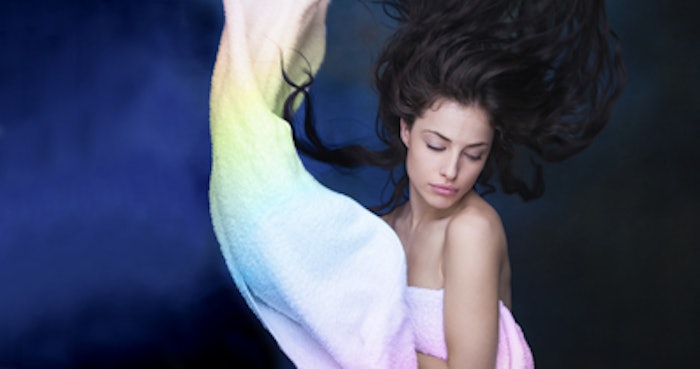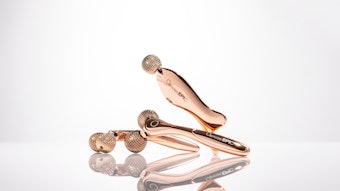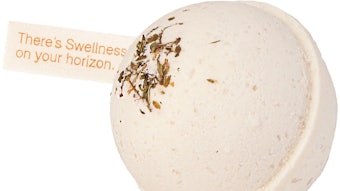
This article originally was published in the July/August 2008 issue of Professional Beauty magazine. Reprinted with permission. All rights reserved.
The influence of color on the human mood has been documented for centuries, but it may truly be coming into its own in the frenetic world of today. The electromagnetic energy found in light is body-compatible and is easily absorbed by the tissues. Visible incoherent polarized (VIP) light rays range from 480–3,400 nanometers (nm) and possess every color of the spectrum while avoiding ultraviolet (UV) rays. As wavelengths decrease, radiation increases, culminating in cosmic radiation, the highest energy of all.
Sunlight is natural, full-spectrum light. If you shine full-spectrum light on a prism, it splits into the colors of the rainbow, each possessing a different wavelength.
Light, color and the body
The human eye contains approximately 137 million photoreceptors—rods detect black and white while cones detect colors—which transform light into electrical impulses. These impulses travel along the various pathways to the hypothalamus, one of the brain’s key control centers. The hypothalamus regulates the autonomic nervous system, which is responsible for the internal functions of the body, such as fluid balance, heat regulation, circulation, breathing, growth and maturation. It also controls the secretions of the pituitary gland, located directly underneath it, which, in turn, regulates the body’s endocrine system. The pineal gland, described as the third eye by Indian mystics, also acts in direct response to light energy received via the eyes. It is the body’s light meter and controls the secretion of the hormone melatonin. It is recognized as playing a key role in almost every aspect of human function.1
Unlike most light systems, VIP light can be applied to the eyes. Research carried out during the past 15 years, primarily in Hungary where VIP light was first introduced and trialed, has demonstrated that VIP light applied through the skin or directly to the blood is bio-stimulatory. In other words, it has a direct influence on cellular function. Recent trials also show that it affects the immune system.2,3 A study at Guy’s Hospital in London showed the T lymphocytes increased by 50% after two treatments lasting four minutes each. VIP light also produces collagen, a key component of skin, tissue and bone.4,5
Therefore, it can be seen that light, which was believed to be only used for vision, can directly affect just about every biological function, including the function of the skin.
The origins of color therapy
Virtually all major civilizations recognized the importance of light in healing, The Assyrians, Babylonians and Egyptians all practiced therapeutic sunbathing.3 The Greek city of Heliopolis, which means “city of the sun,” was renowned for its healing temples and light rooms. The windows in the temples were covered with specially dyed cloths. Different colors were used for their therapeutic healing powers.6,7
Physical affects of color
Color can affect the human body both physically and via energy pathways called meridians. Each color has its own properties, so different colors can have a different affect on the same area of the body. Color energy is a powerful treatment medium, especially if used directly in the form of colored light energy and in the appropriate way.
Muscle treatment. Muscles require energy known as adenosine triphosphate (ATP) to contract and cause an action. In the case of a fatigued muscle, all its energy is depleted and the muscle develops a cramp. Applying orange light to a fatigued muscle will increase blood flow and ATP, thus energizing the muscle. If the muscle has been strained and is locally inflamed due to toxic buildup and increased lactic acid, applying violet color energy would relieve inflammation and decrease pain. This example demonstrates how a similar complaint with nearly identical symptoms can have two different approaches in terms of color therapy. If a multicolored light is applied to the muscle, it will, in almost all cases, relieve pain.
Energizing effects. Chromatherapy works on the energy system of the human body. It aids in the regulation of various biochemical reactions and will also affect the magnetic fields surrounding each person. The rays of light emanating from the color spectrum can aid in the alteration of the magnetic field due to the nature of light—a mixture of electronic and magnetic radiation where one magnetic field affects the other in a positive manner.
This provides important insight into the possibility of a new form of cellular communication by means of low-level light. So if cells can communicate with each other by means of light, what would be the result if a cell was supplied with the light it was requesting? If, for example, certain reactions with a cell have ground to a halt, supplying the appropriate light and color to the cell might ignite the mechanism of chemicals to begin functioning again. This is one of the principles by which color therapy can be used.
Chakra balancing. For thousands of years, many cultures have believed that there is an inherent energy flowing through the body. Mainstream science is now beginning to accept this as fact.2 The findings have shown that humans do in fact radiate various colors in some form.8 Thus, the belief in the existence of auric fields and energy centers, or chakras, in the human body must also hold true. During times of illness or stress, these areas can become depleted or circulate the wrong type of energy. If the chakras are supplied with fresh or appropriate energy in the form of energy vibrations, or colors, of the appropriate frequency and wavelength, they will be rebalanced and might function again together with their corresponding organs. One of the most effective ways of doing this is by directly supplying color energy via color chakra balancing, a 10–15 minute treatment.
Polarized light and color therapy
Polarized light rays can be used as a gentle noninvasive form of treatment that balances the subtle and physical body by either stimulating or calming specific energy points and energy flows in the body. Color energy is delivered to particular points in the body in a unique way. Unlike other light sources, polarized light is incoherent and delivers the full spectrum of color energy in parallel planes. In lay terms, each color/wavelength is delivered independently of the next as either red, orange, yellow, green, blue or other colors. In general, polarized color energy can be thought of as modern therapy based on traditional principles. Someone suffering from a lack of drive or depression may be calmed and at the same time energized.
Specially made handblown glass, color filters can create treatments that are totally compatible with the body and tissue. Coupled with usage on strategic points of both the physical and emotive body, the results can be quite astounding. Colored light rays are well-suited to this task, creating a bridge between the two and facilitating the appropriate energy exchange.
Oxygen can be very effective when used in light and color therapy. If irradiated with a specific form of radiation, in this case with color wavelengths, its molecules can store the vibration of the specific frequency (color) of that radiation.
When drinking water that has been solarized with color rays, it will circulate through the entire body, as water inevitably does, releasing the stored vibrations along the way.
Full circle
So there it is: light, color, water, oxygen—all essential to life on the planet. Due to the polarized effect delivering the full range of colors, results can be very exact. Treatments can be designed for skin rejuvenation, skin problems, general well-being, wound-healing, re-energizing and pain relief.
The effects can be very gentle or extremely stimulating simply by adjusting the exposure time to a specific vibration. In conclusion, color energy therapy is a rediscovered ancient art of healing that affects the body both physically and energetically by means of a range of different vibrations, the activator of which is light.
Modern technology has come full circle and now this art of healing is available to everyone via VIP light and color energy systems.
REFERENCES
1. J Liberman, Light: Medicine of the Future: How We Can Use It to Heal Ourselves Now, Bear & Co: Rochester, VT 30–36 (1993)
2. M Skrobic, Evidence-based review, Bioptron Phototherapy (Nov 2006)
3. M Fenyo, Theoretic and Experimental Basis of Biostimulation by Laser Irradiation, Optics and Laser Technology 16 209–215 ( Aug 1984)
4. Immunology Department of the Institute of Experimental Medicine, Czech Republic (1998)
5. MP Pesko and M Micev, Therapeutic efficiency of polarised light in healing surgical wounds, Scientific project (1998)
6. M Fenyo, History of Light and Colour Therapy,www.bioptron.net.au/3.html
7. T Kubasova, M Fenyo, Z Somosy, LE Gazso, I Kertesz, Investigations on the biological effect of polarized light, Photochemistry and Photobiology 48 4 505–509 (1998)
8. C Klotsche, Color Medicine: The Secrets of Color/Vibrational Healing, Light Technology Publications: Sedona, AZ (1993)










